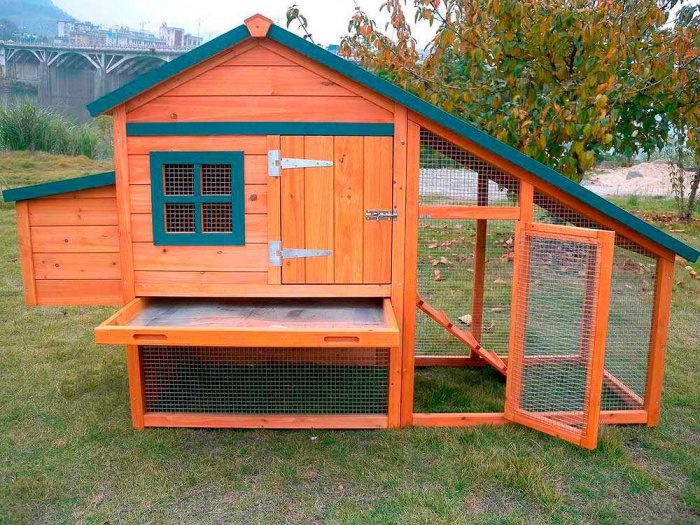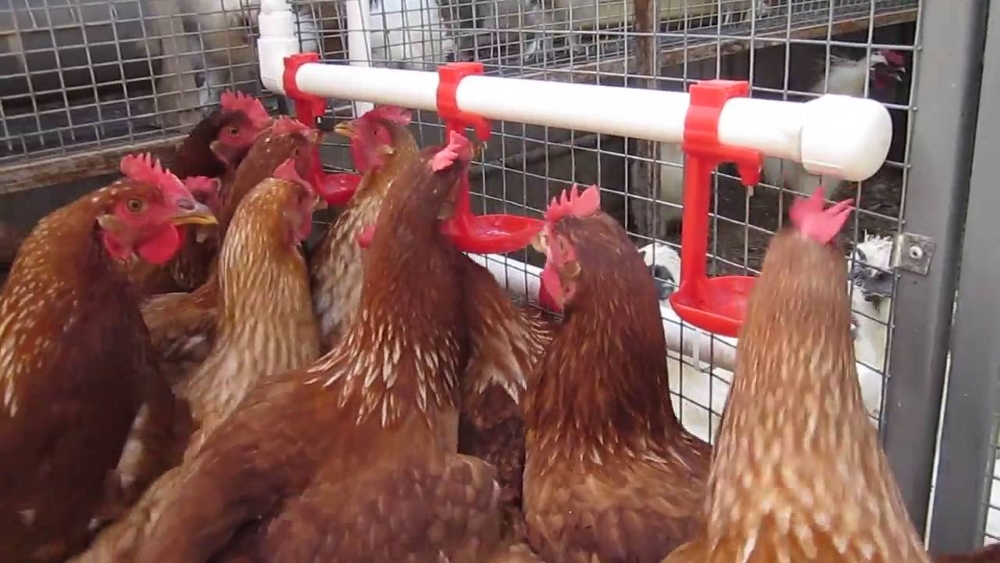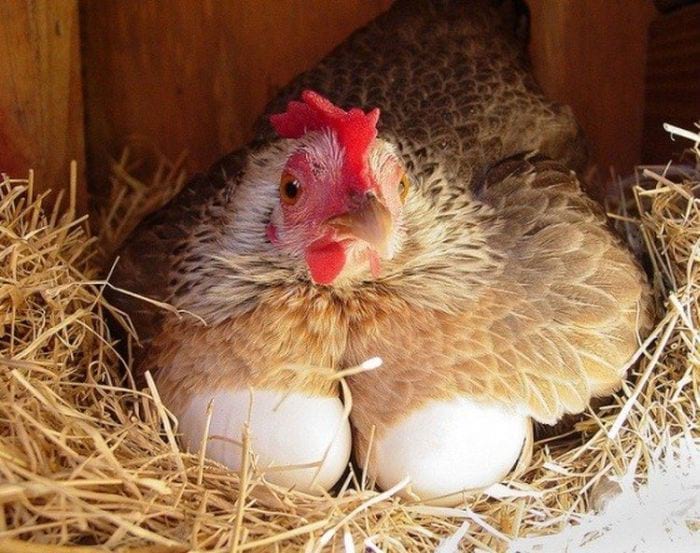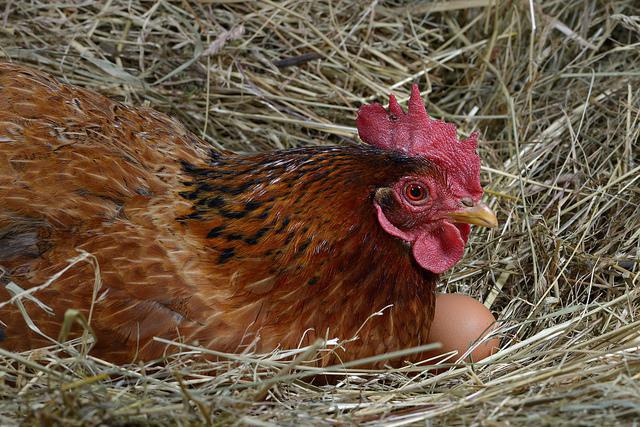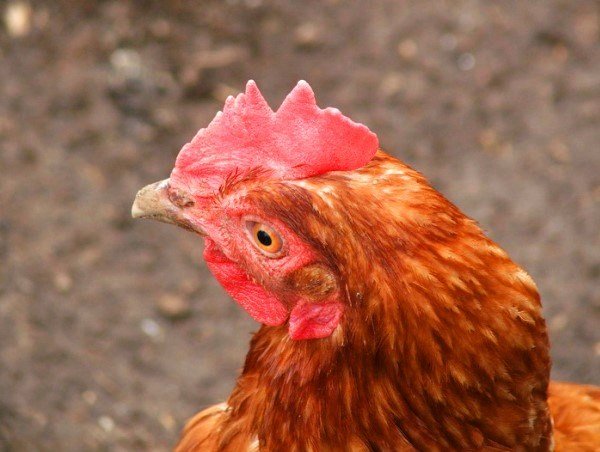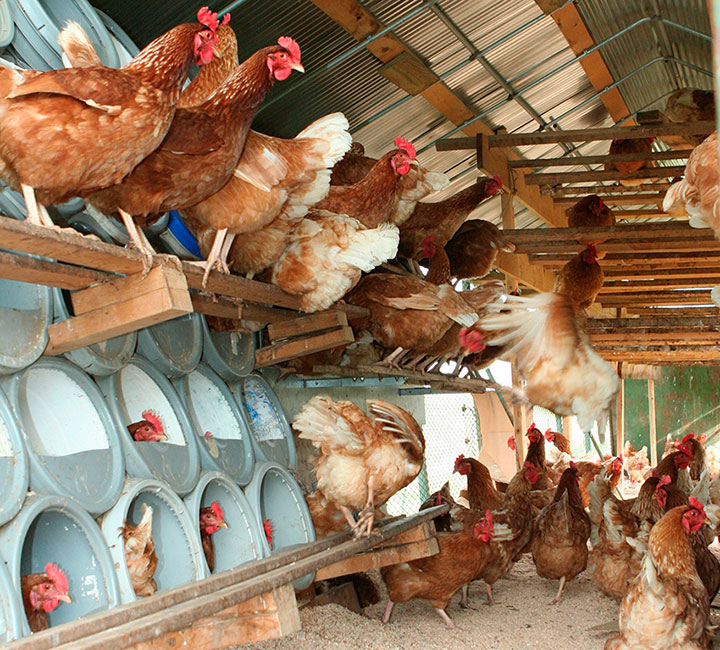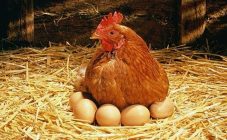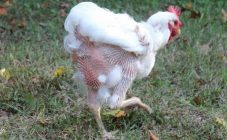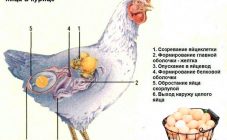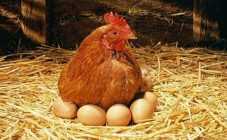Content:
Raising chickens is one of the most lucrative activities. Getting homemade dietary meat and eggs allows you to independently control the quality of products. Currently, there are several areas of growing chickens: egg, meat and meat.
The nutritional value of chicken eggs has been known for a long time. They are easily absorbed by the human body, they contain almost all the necessary amino acids. Boiled eggs are used as a first food for infants. Eggs have an undeniable advantage for culinary purposes.
For poultry farmers who have chosen the egg direction, it is important to comply with the necessary requirements for keeping birds. Otherwise, the livestock will not please with a high-quality and constant flow of products.
How many eggs can you get per year? On average, the productivity of layers is 250-300 eggs per year. With age and after molting, this indicator decreases.
Care rules
When organizing a poultry house, special attention should be paid to the layout of the room. Maximum productivity can only be obtained by arranging a room for chickens separate from other birds and farm animals.
It is better to place the chicken coop on a hill, the effect of groundwater is unacceptable. This will lead to constant dampness and disease in birds.
Fence the yard near the house with a net or wooden fence for walking the flock. The ceiling of the chicken coop should not exceed 1.8 meters in height, since higher buildings will be problematic to heat in the winter. For chickens, a temperature of 23-25 ℃ is required; in winter, the temperature should not fall below 15 ℃.
It is important to regularly ventilate the room with chickens; for this, the easiest way is to make vents. By equipping the house with an exhaust system with plugs, it is possible to regulate how much air will be supplied and to prevent drafts.
It is better to make the floor surface backfilled. It is not recommended to use concrete as a coating. This material damp quickly and greatly affects the room temperature. Pour sawdust, straw or chopped hay onto the floor. In winter, it is possible not to heat the room by creating a layer of litter 0.5 meters thick. Microorganisms living in such a thickness warm it up to 32 ℃.
Good lighting levels are essential for successful laying hens. The area of the windows should be at least 10% of the area of the floor surface. During the period of reduced daylight hours, in order to avoid a drop in the level of egg production, it is necessary to artificially increase the illumination with lamps. Daylight hours should be at least 12-14 hours.
It is imperative to equip the chicken coop with perches. One individual requires 20 cm of perch. They should be placed opposite the windows, raised to a level of 0.8-1.2 meters from the floor. There should be a distance of 35-60 cm between adjacent rungs.
Install nests in secluded areas of the room. For 5-6 hens, you can equip 1 nest. For this, a box filled with straw, shavings or hay 30x30x35 cm is suitable.
A separate door must be installed as an exit from the house to the paddock.A square with sides of 35 cm will be a sufficient size - the entrance, such dimensions will allow you to keep heat in the winter season.
Feeders should be in both the chicken coop and the pen. You can make them from wooden narrow boxes. When calculating the dimensions, it should be borne in mind that 10-15 cm of a feeder is needed for one chicken. To prevent spreading and spoilage of the feed, the feeder can be installed by raising it above the ground.
In addition to feeders, there should be a sufficient number of drinkers. To prevent water spoilage, it is better to use small containers - 5-6 liters.
To prevent the appearance of skin parasites, boxes filled with ash, sand and clay should be placed for bathing chickens. The dimensions of such a structure should be 1.2x0.7x0.2 m.
When chickens start to lay
When do pullets of laying hens start to lay? The age of the onset of laying eggs depends on the conditions of the individuals. When chickens begin to lay eggs, the average age ranges from 4 to 7 months. On average, the egg-laying period begins when a chicken gains 75% of its weight from an adult state. Egg breeds Rhodonite begin to produce eggs at the age of 4-5 months. Meaty a little later, at 20-24 weeks, for example, Loman Brown or brown Kuchinsky. Obtaining eggs from the meat business is not economically justified. The first egg from a broiler can be obtained at the age of 7.5-8 months, while how many eggs such a breed will give cannot be compared with real layers.
When the pullet hen will lay
It is possible to assume the possibility of laying eggs by a certain chicken by noting the following signs:
- A fertile young laying hen is active, walks well, rummages in the litter and runs to the feeder;
- The ridge should be smooth and warm, and the beak should be short and firm. The crest, beak and legs have the ability to change color. The light, slightly silvery color of these parts of the body indicates good health of the chicken. Wrinkled and cold crest, broken beak, bright color of the legs are the first signs of low egg production;
- In fertile layers, the distance between the pelvic bones should be 6 cm. A soft and large belly also signals good performance. In poor laying hens, this distance is less, and the bones are covered with fatty tissue.
Are laying hens laying
To test an individual for the ability to lay eggs, you must begin to examine it. When the hen begins to lay eggs, its appearance begins to change. Earrings, earlobes, ridge should be bright and warm, slightly swollen. As secondary sexual characteristics, they signal changes in the ovaries of birds. The increase in the listed parts occurs during the period of increase in the size of the yolks in the appendages.
The skin of good layers is light and soft. Otherwise, it will be bluish or yellowish, with characteristic fatty accumulations.
How else can you tell if a chicken is laying or not? Stable egg-laying chickens have a short and strong back, legs wide apart with pale skin. The pallor of the integument symbolizes the transfer of dyes to the yolk, therefore, such a bird is a good laying hen.
Consuming more food during the egg-laying period, the belly of chickens becomes large and elastic. There is an increase in the volume of the oviduct and ovaries.
Inspection and description of the cloaca can unambiguously find out the answer to the question of the ability of an individual to lay eggs. In productive individuals, the cloaca should be clearly visible under the tail, partially open and be moist on palpation. A dry, wrinkled cloaca is a sign of inability to enter.
You can also palpate the chicken's body.To do this, in the evening, press on the upper part of the body above the cloaca with the palm of your hand. At this moment, you can feel the presence of an egg inside. The belly of such a chicken is soft, resembling a sponge.
When a hen is seen for signs of inability to lay eggs, it should not be discarded immediately. Having determined the cause of this condition, it is possible to bring the health status of the individual back to normal, and she can begin to lay eggs. It should be emphasized that the fertility of chickens mainly depends on the conditions of keeping and caring for the herd. Therefore, the appearance of such birds should make you think and analyze the methods of caring for a farmer for livestock.
To chickens rush
In order to get chickens to give a stable flow of eggs, the following conditions should be followed:
- there should be no drafts in the room with chickens;
- be sure to put dried hay in the nests;
- in winter, it is imperative to install additional containers with sand to improve digestion;
- it is better to feed with crushed grains in winter;
- be sure to add vitamin complexes and fish oil in the cold season;
- the introduction of chalk and shells will make up for the lack of calcium, which is necessary to build the egg shell;
- compliance with the light regime will preserve the ability of chickens to lay eggs.
To make the chickens run better
To increase the productivity of chickens, it is necessary to observe the stocking density of individuals. There should be no more than 5 heads per square meter. A balanced diet, including vitamin supplements, minerals and herbs, will support the body of chickens during the period of egg production.
Maintaining the length of daylight hours at the level of 12-16 hours will compensate for the lack of sun in the winter. Regular replacement of 70-80% of the flock will ensure a constant level of laid eggs.
Secrets of experienced poultry farmers
To create profitable egg production, the following tips from experienced poultry farmers should be considered. The total egg production depends to a greater extent not on the chosen breed of chickens, but on the conditions of existence created for it.
- Chickens should not be allowed to overeat. Overfed individuals will stop laying eggs, will be more susceptible to diseases, are weak and lazy;
- Chickens need a quiet time. Between 8 am and 4 pm, do not disturb the herd in vain. A noisy environment and frequent interference with their livelihoods will provoke stress and lack of eggs on this day. Also, barking and dog chasing of chickens have a negative effect on productivity;
- Failure to comply with the temperature regime will affect the general condition of individuals. At elevated temperatures, the birds will try to leave the room, at low temperatures, they will wait out an unfavorable time, delaying the laying.
- It has been proven that the inclusion of classical music in the hen house increases the total number of eggs laid by 11-14%.
- Keeping a rooster in the general herd contributes to the growth of egg production.
Summing up, we can say that chickens are the most productive birds in terms of egg production. The early age of the onset of laying eggs, low demands on the conditions of keeping make these birds the most attractive for novice poultry breeders. However, despite the relative simplicity, some prerequisites must be observed to obtain a stable flow of domestic eggs.
Chickens need to equip the chicken coop with a sufficient number of perches and feeders. Otherwise, you can provoke a struggle for the missing resource. The room itself should be divided into two components. This is a covered, heated and lighted room and area for free roaming of birds.The floor of the house should be insulated with a thick layer of bedding, otherwise chickens will be susceptible to colds. Windows or vents must also be present. Airing the room is a guarantee of a lesser spread of various pathogens. However, you should beware of the appearance of drafts.
A balanced diet plays one of the most important roles in the formation of eggs. With a deficiency or imbalance of nutrients, a violation of the fertile qualities of chickens and a delay in the process of laying eggs occur.
Self-examination can be done to check that the chickens are ready to lay eggs. Healthy, fertile chickens have a faint scallop coloration, a small and dull beak, and yellowish legs. Chickens unable to lay eggs are characterized by poor development of the ridge, bright coloration of both paws and earlobes. In addition, a tight belly and a wide set of pelvic bones are a signal for the ability to lay eggs.
Applying the described schemes in practice, even novice poultry farmers will not have difficulty in equipping and getting a profitable farm for obtaining eggs.
